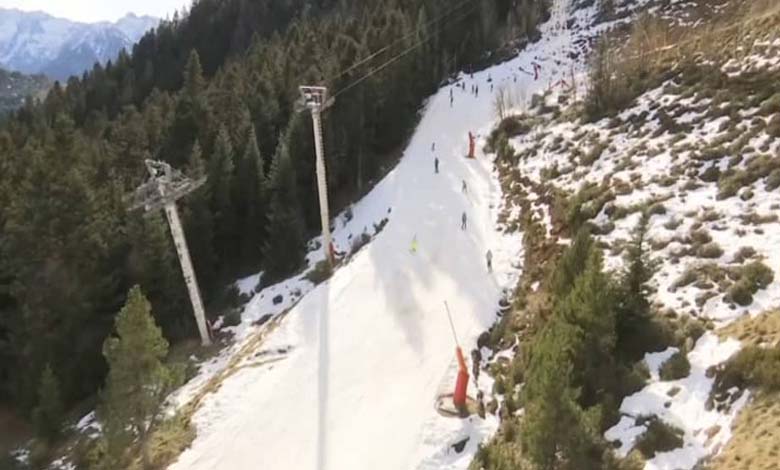Snow Scarcity this Winter: A new blow to climate and water supplies

Despite the recent days of snowfall in Europe, its scarcity due to climate change poses a threat to water supplies for hundreds of millions of people, according to a study published in the journal “Nature.”
This trend is expected to worsen, as anticipated by the study’s authors, researchers at Dartmouth College who compared climate models and data recorded over four decades, extracted from monitoring precipitation and snow cover in March when melting begins.
The results of these researchers indicate that 80% of the snow mass in the northern hemisphere is found in extremely cold regions, where the average winter temperature is below eight degrees Celsius below zero, and where the snow cover is minimally or not affected at all by climate change.
In contrast, the remaining 20% is located in regions where the average temperature is above eight degrees below zero, a threshold beyond which “small increases in marginal temperature lead to increasing snow losses” for every ten degrees.
It is known, according to the study’s authors, that four out of every five residents of the northern hemisphere live in areas that depend to varying degrees on this snow cover.
The researchers noted that the southwestern and northeastern United States, as well as central and eastern Europe, have seen a decrease in snow cover by 10 to 20 percent each decade since the 1980s.
Snow scarcity leads to a decrease in the amount of water produced in the spring due to melting, which replenishes rivers, ponds, and soil.
The upper Mississippi River basin in the United States and the Danube in Europe, with populations of 84 million and 92 million respectively, have seen a 30% and 40% reduction in available water sources for this reason.
The study’s lead author, Alexander Gootlieb, a doctoral student at Dartmouth College, expects that “these areas will be almost snow-free by the end of the twenty-first century in late March.”
Climate warming also results in winter precipitation where rain dominates over snow, leading to immediate surface runoff and floods, instead of storing water on mountains until spring and summer when it is most needed by the population.
The damages caused by decreasing snow are not limited to reducing water resources but also negatively impact tourism and skiing resorts.
Furthermore, the transition of snow to rain can harm ecosystems, promoting the spread of parasites and making forests more susceptible to drought-induced fires during the melting seasons.












